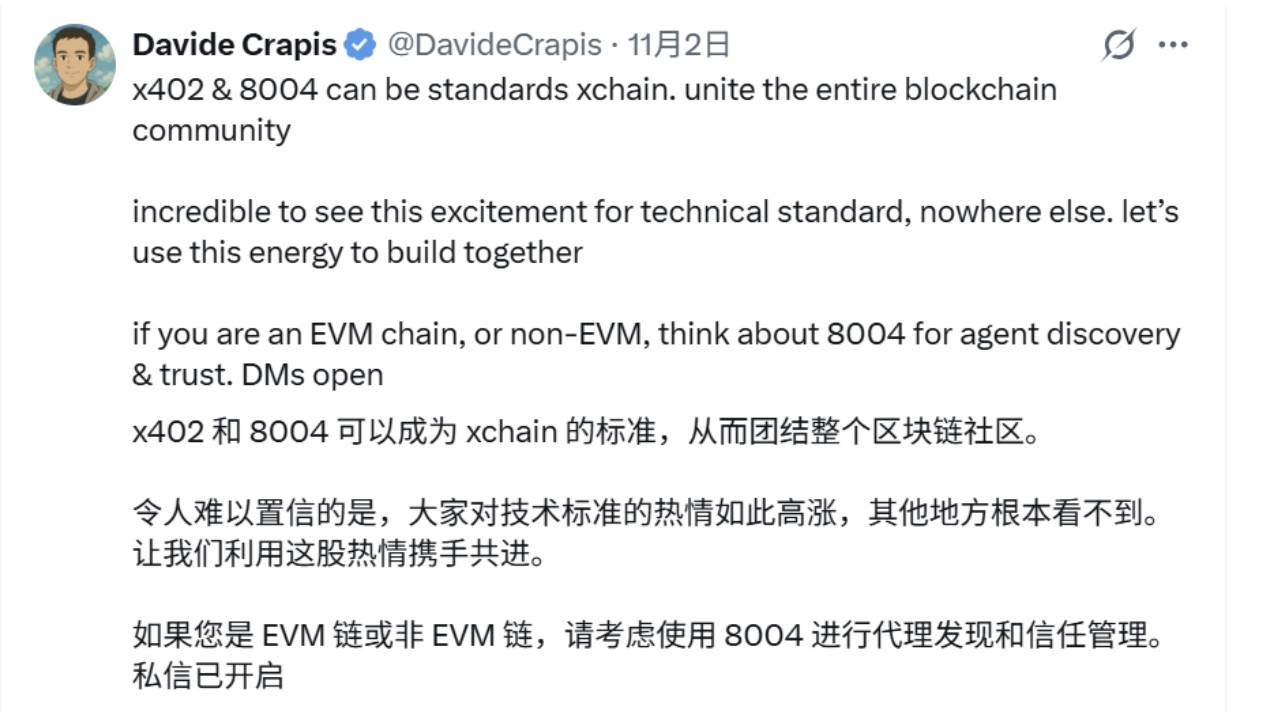[Long English Thread] Who is making money with Builder Codes? A revolution of interests between platforms and developers
Chainfeeds Guide:
Application developers are quietly earning millions of dollars by building products on platforms such as Hyperliquid and Polymarket, leveraging a new revenue attribution mechanism called "builder code."
Source:
Author:
Jarrod Watts
Opinion:
Jarrod Watts: App developers are quietly making big money by building products on Hyperliquid and Polymarket, earning revenue through a brand-new distribution mechanism called "builder codes." Essentially, this is the crypto version of the Roblox model: the platform provides the infrastructure, external developers build apps, and the platform pays out based on the real usage they bring. The definition of builder codes is actually quite simple: it is essentially a referral code mechanism aimed at developers. When an app calls a platform (such as Hyperliquid), it attaches its own builder code during user transactions or interactions. The platform then automatically distributes a share of the fees generated by the transaction—such as trading fees or volume—to the developer (verifiable on-chain). This has created a brand-new on-chain attribution model in the crypto ecosystem, where third-party apps—whether trading tools, AI agents, wallet interfaces, web or mobile DApps—can earn a share of the revenue by bringing usage to the protocol. The platform gets more trading volume, developers earn income, and users enjoy a more convenient experience, forming a win-win-win structure. Phantom is the most typical example. In July 2025, Phantom integrated Hyperliquid perpetual contract trading into its wallet, attaching its own builder code to each order to take a 0.05% fee, all implemented through Hyperliquid’s API without the need to develop complex perpetual contract infrastructure themselves. This model quickly showed its power: Phantom earns about $100,000 in revenue daily, achieved nearly $20 billions in perpetual trading volume in less than half a year, and accumulated nearly $10 millions in revenue. In an even more extreme case, a user lost 99% of their $2 million principal in Phantom’s perpetual trading, realizing a loss of about $1.8 million and paying nearly $191,000 in fees to Phantom. For Phantom, this is a purely on-chain passive income model—as long as users keep trading, app developers keep making money. This also demonstrates the remarkable incentive effect of builder codes: Hyperliquid has gained over $100 billions in additional perpetual trading volume and has paid nearly $40 millions to app developers, attracting a large number of developers to build new interfaces and entry points for it. Polymarket has also launched a similar mechanism; its Builders Program distributes rewards based on the trading volume brought by third-party applications. To encourage integration, Polymarket distributes USDC incentives weekly, allocated according to the trading volume contributed by each app. Although the scale of third-party Polymarket apps is still much smaller than Hyperliquid, they have already attracted teams to build new interfaces and entry points, providing users with unique prediction experiences. Over $50 millions in prediction bets have already been completed through third-party Polymarket apps. Polymarket has also built a builder leaderboard and rewards dashboard similar to Hyperliquid’s, showcasing which apps bring the most trading volume and earn the most revenue. Such mechanisms mean that more prediction markets may join the competition, and even more crypto applications may copy this revenue-sharing system, as it does not require aggressive subsidies or airdrops, but can incentivize ecosystem participants with real trading fees. On a larger scale, Ethereum has even greater potential: integrating builder codes directly into underlying standards to natively support this mechanism. ERC-8021 is the latest proposal, designing a way to embed builder codes into transactions themselves, while providing a registry smart contract where developers can register their builder code and the wallet to receive rewards. Once implemented, any platform in the Ethereum ecosystem can transparently and automatically attribute trading activity to a specific app and directly distribute revenue shares to developer wallets. This means wallets, trading interfaces, bots, AI Agents, mobile DApps, and web tools can all earn income for bringing real on-chain activity. Ethereum already has a large number of mature protocols and users, and if a standardized builder code mechanism is adopted, it could form a native App Store revenue-sharing system for the crypto world, attracting more developers to build more user-friendly consumer applications. For developers, this model is a brand-new source of income that does not rely on subsidies, grants, funds, or speculative booms, but is based on real usage and value transfer. The essence of builder codes is to make "whoever brings value, earns money" a transparent, automatic, and verifiable on-chain process. Hyperliquid has quickly proven the feasibility of this model and attracted excellent development teams to build new applications through substantial revenue sharing. Polymarket is following suit, and in the future, other prediction markets, derivatives protocols, on-chain trading systems, and even wallets, lending, points, and stablecoin payment platforms may adopt this approach to attract ecosystem developers. Compared to ineffective airdrops and subsidies, this model can sustainably and cost-effectively expand the ecosystem without creating fake activity or bubbles. When developers can earn real revenue through builder codes, users will enjoy higher-quality product experiences, protocols will gain more stable traffic entry points, and the entire ecosystem will move toward a virtuous cycle. In a broader vision, if the Ethereum ecosystem adopts the unified ERC-8021 solution, builder code will become a transaction-level public standard. Any transaction can be attached
Disclaimer: The content of this article solely reflects the author's opinion and does not represent the platform in any capacity. This article is not intended to serve as a reference for making investment decisions.
You may also like
Behind the x402 boom: How does ERC-8004 build the trust foundation for AI agents?
If the emergence of x402 has demonstrated the substantial demand for AI agent payments, then ERC-8004 represents another fundamental and underlying core element necessary for building this vast machine economy.

PFDEX Makes a Grand Debut at the PopChain Global Ecosystem Conference in Hong Kong

Cathie Wood Revises Bitcoin’s 2030 Forecast: Will Stablecoins Take Over?
In Brief Cathie Wood revises Bitcoin's 2030 target due to rapid stablecoin adoption. Stablecoins serve as digital dollars, impacting Bitcoin's expected role. Trump's crypto-friendly policies encourage Bitcoin's market prominence.

Internal Conflict Sparks Unanticipated Surge in FET Value
In Brief ASI faces internal conflict amid legal battles impacting future prospects. Surprisingly, lawsuit news boosted FET buying interest and trading volume increased. Potential for renewed interest in AI-themed tokens as investors watch developments.

